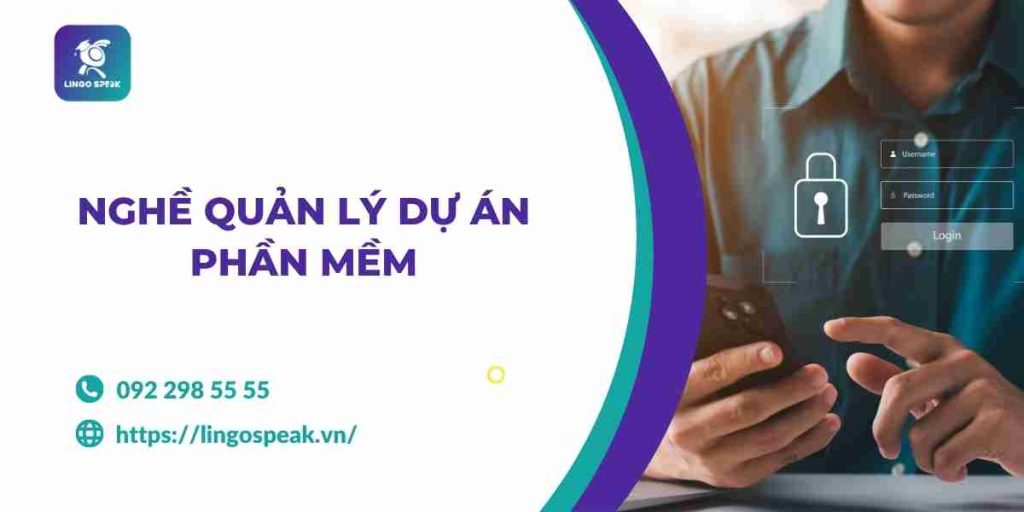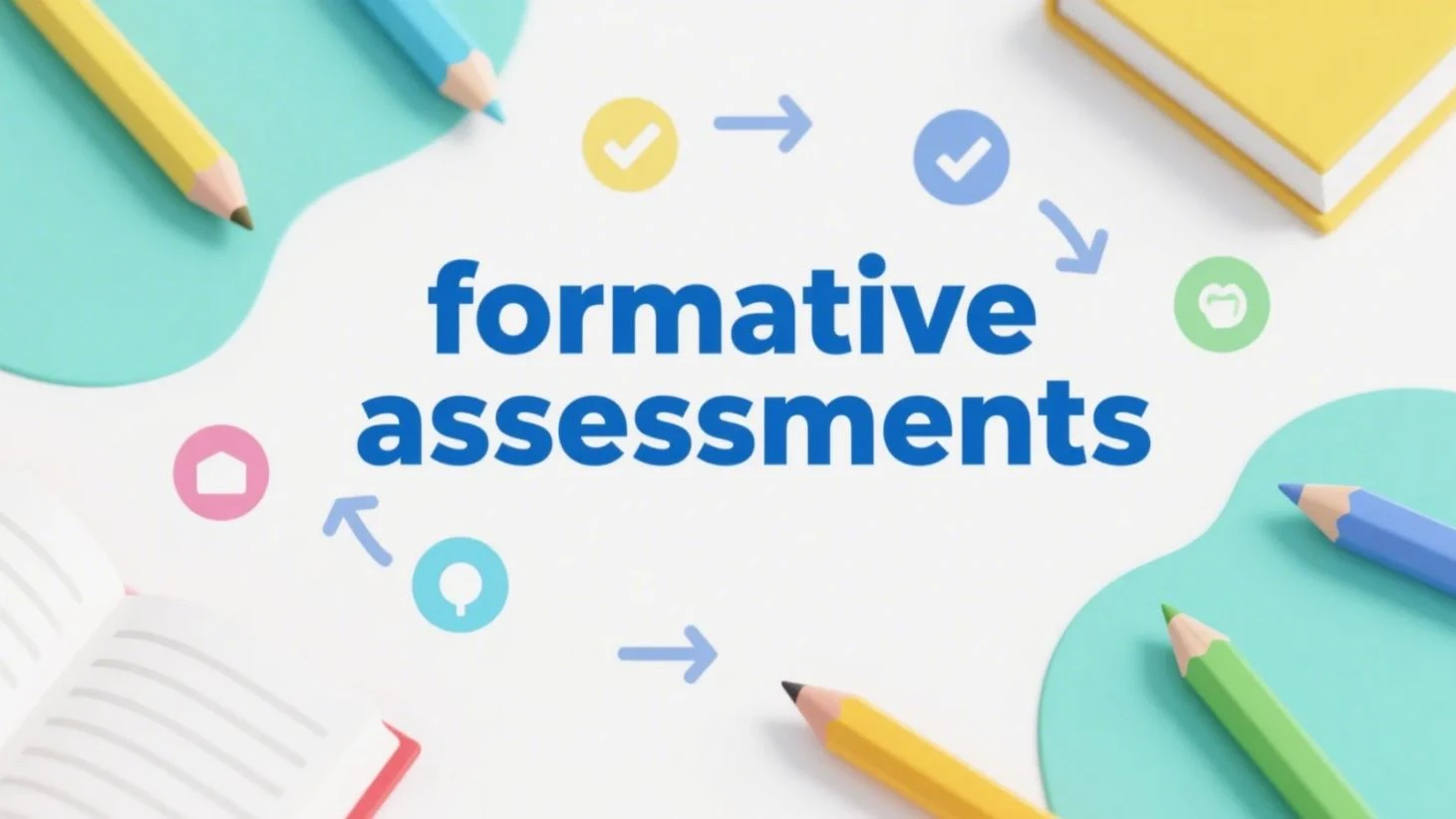Bài viết này sẽ giới thiệu 100 từ vựng và cụm từ vựng tiếng Anh phổ biến trong ngành Quản lý Dự án Phần mềm. Những thuật ngữ này rất hữu ích cho những ai làm việc trong lĩnh vực phát triển phần mềm, bao gồm các khái niệm về quy trình, công cụ và vai trò quản lý.
Từ vựng nghề Quản lý dự án phần mềm
- Project Management – Quản lý dự án
- Software Development Life Cycle (SDLC) – Vòng đời phát triển phần mềm
- Agile Methodology – Phương pháp Agile
- Scrum – Scrum (một framework Agile)
- Sprint – Sprint (giai đoạn trong Scrum)
- Backlog – Danh sách công việc tồn đọng
- Product Owner – Chủ sản phẩm
- Scrum Master – Người điều phối Scrum
- Stakeholder – Các bên liên quan
- Requirement Gathering – Thu thập yêu cầu
- User Story – Câu chuyện người dùng
- Acceptance Criteria – Tiêu chí chấp nhận
- Burn-down Chart – Biểu đồ Burn-down
- Kanban Board – Bảng Kanban
- Waterfall Model – Mô hình thác nước
- Milestone – Cột mốc
- Gantt Chart – Biểu đồ Gantt
- Work Breakdown Structure (WBS) – Cấu trúc phân chia công việc
- Risk Management – Quản lý rủi ro
- Issue Tracking – Theo dõi vấn đề
- Change Management – Quản lý thay đổi
- Project Scope – Phạm vi dự án
- Deliverable – Sản phẩm bàn giao
- Resource Allocation – Phân bổ tài nguyên
- Cost Estimation – Ước tính chi phí
- Budget Management – Quản lý ngân sách
- Time Tracking – Theo dõi thời gian
- Quality Assurance (QA) – Đảm bảo chất lượng
- Continuous Integration (CI) – Tích hợp liên tục
- Continuous Delivery (CD) – Phân phối liên tục
- Version Control – Kiểm soát phiên bản
- Git Repository – Kho Git
- Branching Strategy – Chiến lược phân nhánh
- Merge Conflict – Xung đột khi gộp nhánh
- Code Review – Kiểm tra mã nguồn
- Technical Debt – Nợ kỹ thuật
- Refactoring – Tái cấu trúc mã nguồn
- Deployment – Triển khai
- Environment – Môi trường (phát triển, kiểm thử, sản xuất)
- DevOps – DevOps (phương pháp kết hợp phát triển phần mềm và vận hành hệ thống)
- Sprint Planning – Lập kế hoạch Sprint
- Daily Stand-up – Cuộc họp ngắn hàng ngày
- Retrospective – Đánh giá sau Sprint
- Velocity – Tốc độ hoàn thành công việc
- Release Management – Quản lý phát hành
- Integration Testing – Kiểm thử tích hợp
- Unit Testing – Kiểm thử đơn vị
- Regression Testing – Kiểm thử hồi quy
- Automated Testing – Kiểm thử tự động
- Test Case – Kịch bản kiểm thử
- Bug Report – Báo cáo lỗi
- Patch – Bản vá lỗi
- Hotfix – Sửa lỗi nhanh
- Minimum Viable Product (MVP) – Sản phẩm khả dụng tối thiểu
- Proof of Concept (PoC) – Bằng chứng khái niệm
- Feasibility Study – Nghiên cứu tính khả thi
- Prototype – Mẫu thử nghiệm
- Beta Release – Phát hành phiên bản thử nghiệm
- End-user – Người dùng cuối
- Usability Testing – Kiểm thử tính khả dụng
- Customer Feedback – Phản hồi khách hàng
- User Acceptance Testing (UAT) – Kiểm thử chấp nhận của người dùng
- Service Level Agreement (SLA) – Thỏa thuận mức độ dịch vụ
- Project Charter – Hiến chương dự án
- Project Plan – Kế hoạch dự án
- Kick-off Meeting – Cuộc họp khởi động
- Project Closure – Đóng dự án
- Lessons Learned – Bài học rút ra
- Project Dashboard – Bảng điều khiển dự án
- Critical Path Method (CPM) – Phương pháp đường găng
- Resource Leveling – Cân bằng tài nguyên
- Project Governance – Quản trị dự án
- Project Portfolio Management (PPM) – Quản lý danh mục dự án
- Earned Value Management (EVM) – Quản lý giá trị thu được
- Key Performance Indicator (KPI) – Chỉ số hiệu suất chính
- Business Case – Đề xuất kinh doanh
- Scope Creep – Thay đổi phạm vi dự án
- Project Sponsor – Nhà tài trợ dự án
- Escalation – Nâng cao mức độ xử lý
- Decision Log – Nhật ký quyết định
- Meeting Minutes – Biên bản cuộc họp
- Work Package – Gói công việc
- Dependency – Sự phụ thuộc
- Baseline – Đường cơ sở
- Variance Analysis – Phân tích biến động
- Communication Plan – Kế hoạch truyền thông
- Risk Register – Sổ đăng ký rủi ro
- Project Phase – Giai đoạn dự án
- Functional Requirements – Yêu cầu chức năng
- Non-functional Requirements – Yêu cầu phi chức năng
- Use Case – Tình huống sử dụng
- Project Metrics – Chỉ số dự án
- Project Status Report – Báo cáo trạng thái dự án
- Project Schedule – Lịch trình dự án
- Task Assignment – Phân công công việc
- Collaboration Tool – Công cụ cộng tác
- Remote Team – Đội ngũ làm việc từ xa
- Project Risks – Rủi ro dự án
- Contingency Plan – Kế hoạch dự phòng
- Project Success Criteria – Tiêu chí thành công dự án
Bài viết sử dụng thuật ngữ trên
- Project Management: Effective project management is crucial for the successful delivery of software projects.
- Software Development Life Cycle (SDLC): The SDLC ensures that the software is developed systematically and efficiently.
- Agile Methodology: Agile methodology promotes iterative development and continuous feedback.
- Scrum: The team uses Scrum to manage and complete their work on the project.
- Sprint: Each Sprint lasts for two weeks and focuses on delivering a potentially shippable product increment.
- Backlog: The Product Owner prioritizes the items in the backlog before the Sprint begins.
- Product Owner: The Product Owner is responsible for maximizing the value of the product.
- Scrum Master: The Scrum Master facilitates the Scrum ceremonies and removes obstacles for the team.
- Stakeholder: Regular communication with stakeholders is essential to ensure the project meets their needs.
- Requirement Gathering: Requirement gathering is the first step in the project to understand what the client needs.
- User Story: Each user story represents a small, manageable chunk of functionality.
- Acceptance Criteria: The acceptance criteria define the conditions that must be met for a user story to be considered complete.
- Burn-down Chart: The burn-down chart shows the team’s progress during the Sprint.
- Kanban Board: The team uses a Kanban board to visualize the workflow and track tasks.
- Waterfall Model: The Waterfall model is a linear and sequential approach to software development.
- Milestone: Reaching the first milestone was a major achievement for the project team.
- Gantt Chart: The project manager used a Gantt chart to illustrate the project schedule.
- Work Breakdown Structure (WBS): A Work Breakdown Structure helps to organize the project’s tasks into manageable sections.
- Risk Management: Risk management is essential to identify, assess, and mitigate potential project risks.
- Issue Tracking: Issue tracking tools help the team manage and resolve problems as they arise.
- Change Management: Change management processes ensure that any modifications to the project are controlled and documented.
- Project Scope: The project scope defines the boundaries and deliverables of the project.
- Deliverable: The final deliverable must be completed by the end of the month.
- Resource Allocation: Resource allocation ensures that team members are assigned to tasks according to their skills and availability.
- Cost Estimation: Accurate cost estimation is vital for budgeting and financial planning.
- Budget Management: The project manager is responsible for budget management to ensure that the project does not exceed its financial limits.
- Time Tracking: Time tracking helps monitor how much time is spent on each task.
- Quality Assurance (QA): Quality Assurance processes ensure that the software meets the required standards.
- Continuous Integration (CI): Continuous Integration allows developers to merge their code into the main branch frequently.
- Continuous Delivery (CD): Continuous Delivery ensures that the software can be released to production at any time.
- Version Control: Version control systems like Git help manage changes to the source code over time.
- Git Repository: All the project’s code is stored in a Git repository.
- Branching Strategy: The team followed a branching strategy to manage different versions of the software.
- Merge Conflict: A merge conflict occurred when two developers modified the same section of code.
- Code Review: The team conducts code reviews to ensure that the code meets quality standards.
- Technical Debt: Accumulating too much technical debt can slow down future development.
- Refactoring: Refactoring improves the internal structure of the code without changing its external behavior.
- Deployment: The new version of the software will be deployed to the production environment next week.
- Environment: The software was tested in a staging environment before being deployed to production.
- DevOps: DevOps practices integrate software development and IT operations for faster delivery.
- Sprint Planning: During Sprint planning, the team decides which user stories they will work on.
- Daily Stand-up: The team holds a daily stand-up meeting to discuss their progress and any blockers.
- Retrospective: The Sprint retrospective allows the team to reflect on what went well and what could be improved.
- Velocity: The team’s velocity increased after they became more familiar with the project.
- Release Management: Release management coordinates the deployment of new features to production.
- Integration Testing: Integration testing ensures that different modules of the software work together correctly.
- Unit Testing: Unit testing verifies that individual components of the software function as intended.
- Regression Testing: Regression testing checks that new changes have not introduced new bugs.
- Automated Testing: Automated testing speeds up the testing process and reduces manual errors.
- Test Case: Each test case describes a specific scenario to be tested.
- Bug Report: The tester submitted a bug report after finding a defect in the software.
- Patch: A patch was released to fix the security vulnerability.
- Hotfix: The team applied a hotfix to resolve a critical issue in the production system.
- Minimum Viable Product (MVP): The startup launched an MVP to validate their product idea with early users.
- Proof of Concept (PoC): A Proof of Concept was created to demonstrate the feasibility of the new technology.
- Feasibility Study: The feasibility study showed that the project could be completed within the allocated budget and timeline.
- Prototype: A prototype was developed to gather feedback from stakeholders before full-scale development.
- Beta Release: The beta release allowed users to test the software before the official launch.
- End-user: The end-user provided valuable feedback on the software’s usability.
- Usability Testing: Usability testing revealed several issues that needed to be addressed before launch.
- Customer Feedback: Customer feedback is essential for improving the software and adding new features.
- User Acceptance Testing (UAT): User Acceptance Testing ensures that the software meets the end-user’s requirements.
- Service Level Agreement (SLA): The SLA defines the level of service the provider guarantees to the customer.
- Project Charter: The project charter outlines the objectives, scope, and stakeholders involved in the project.
- Project Plan: The project plan details the timeline, resources, and tasks needed to complete the project.
- Kick-off Meeting: The kick-off meeting was held to officially start the project and align the team.
- Project Closure: Project closure involves finalizing all activities and formally closing the project.
- Lessons Learned: The team documented the lessons learned to improve future projects.
- Project Dashboard: The project dashboard provides a real-time overview of the project’s status.
- Critical Path Method (CPM): The Critical Path Method helps identify the longest sequence of tasks in the project.
- Resource Leveling: Resource leveling is used to avoid over-allocation of team members.
- Project Governance: Project governance defines the structure and processes for decision-making in the project.
- Project Portfolio Management (PPM): Project Portfolio Management helps prioritize projects based on strategic objectives.
- Earned Value Management (EVM): Earned Value Management measures project performance against the plan.
- Key Performance Indicator (KPI): The project’s success was measured using Key Performance Indicators.
- Business Case: The business case justifies the investment in the project.
- Scope Creep: Scope creep occurs when additional features are added to the project without proper approval.
- Project Sponsor: The project sponsor provides the necessary funding and support for the project.
- Escalation: The issue was escalated to senior management for resolution.
- Decision Log: All major decisions were recorded in the decision log for future reference.
- Meeting Minutes: The meeting minutes were distributed to all attendees after the meeting.
- Work Package: Each work package contains a detailed description of the tasks to be completed.
- Dependency: The project schedule must account for the dependencies between tasks.
- Baseline: The project’s progress was compared against the baseline to identify deviations.
- Variance Analysis: Variance analysis helps identify the reasons for any discrepancies in the project’s performance.
- Communication Plan: The communication plan outlines how project information will be shared with stakeholders.
- Risk Register: The risk register lists all identified risks and their mitigation strategies.
- Project Phase: The project phase defines a distinct period within the project lifecycle.
- Functional Requirements: Functional requirements specify what the software must do to meet the user’s needs.
- Non-functional Requirements: Non-functional requirements include performance, security, and usability criteria.
- Use Case: The use case describes how the system will be used by the user.
- Project Metrics: Project metrics are used to measure the efficiency and effectiveness of the project.
- Project Status Report: The project status report provides an update on the project’s progress and any issues.
- Project Schedule: The project schedule outlines the timeline for completing each task.
- Task Assignment: Task assignment ensures that each team member knows what they are responsible for.
- Collaboration Tool: The team used a collaboration tool to communicate and share files.
- Remote Team: Managing a remote team requires clear communication and regular check-ins.
- Project Risks: The project risks were identified and assessed during the planning phase.
- Contingency Plan: The contingency plan was activated when the project faced an unexpected delay.
- Project Success Criteria: The project success criteria were clearly defined at the beginning of the project.
Bài tập
- Effective ________ is crucial for the successful delivery of software projects.
- The ________ ensures that the software is developed systematically and efficiently.
- ________ methodology promotes iterative development and continuous feedback.
- The team uses ________ to manage and complete their work on the project.
- Each ________ lasts for two weeks and focuses on delivering a potentially shippable product increment.
- The Product Owner prioritizes the items in the ________ before the Sprint begins.
- The ________ is responsible for maximizing the value of the product.
- The ________ facilitates the Scrum ceremonies and removes obstacles for the team.
- Regular communication with ________ is essential to ensure the project meets their needs.
- ________ is the first step in the project to understand what the client needs.
- Each ________ represents a small, manageable chunk of functionality.
- The ________ define the conditions that must be met for a user story to be considered complete.
- The ________ shows the team’s progress during the Sprint.
- The team uses a ________ to visualize the workflow and track tasks.
- The ________ is a linear and sequential approach to software development.
- Reaching the first ________ was a major achievement for the project team.
- The project manager used a ________ to illustrate the project schedule.
- A ________ helps to organize the project’s tasks into manageable sections.
- ________ is essential to identify, assess, and mitigate potential project risks.
- ________ tools help the team manage and resolve problems as they arise.
- ________ processes ensure that any modifications to the project are controlled and documented.
- The ________ defines the boundaries and deliverables of the project.
- The final ________ must be completed by the end of the month.
- ________ ensures that team members are assigned to tasks according to their skills and availability.
- Accurate ________ is vital for budgeting and financial planning.
- The project manager is responsible for ________ to ensure that the project does not exceed its financial limits.
- ________ helps monitor how much time is spent on each task.
- ________ processes ensure that the software meets the required standards.
- ________ allows developers to merge their code into the main branch frequently.
- ________ ensures that the software can be released to production at any time.
- ________ systems like Git help manage changes to the source code over time.
- All the project’s code is stored in a ________.
- The team followed a ________ to manage different versions of the software.
- A ________ occurred when two developers modified the same section of code.
- The team conducts ________ to ensure that the code meets quality standards.
- Accumulating too much ________ can slow down future development.
- ________ improves the internal structure of the code without changing its external behavior.
- The new version of the software will be ________ to the production environment next week.
- The software was tested in a staging ________ before being deployed to production.
- ________ practices integrate software development and IT operations for faster delivery.
- During ________, the team decides which user stories they will work on.
- The team holds a ________ meeting to discuss their progress and any blockers.
- The Sprint ________ allows the team to reflect on what went well and what could be improved.
- The team’s ________ increased after they became more familiar with the project.
- ________ coordinates the deployment of new features to production.
- ________ ensures that different modules of the software work together correctly.
- ________ verifies that individual components of the software function as intended.
- ________ checks that new changes have not introduced new bugs.
- ________ speeds up the testing process and reduces manual errors.
- Each ________ describes a specific scenario to be tested.
- The tester submitted a ________ after finding a defect in the software.
- A ________ was released to fix the security vulnerability.
- The team applied a ________ to resolve a critical issue in the production system.
- The startup launched an ________ to validate their product idea with early users.
- A ________ was created to demonstrate the feasibility of the new technology.
- The ________ showed that the project could be completed within the allocated budget and timeline.
- A ________ was developed to gather feedback from stakeholders before full-scale development.
- The ________ allowed users to test the software before the official launch.
- The ________ provided valuable feedback on the software’s usability.
- ________ revealed several issues that needed to be addressed before launch.
- ________ is essential for improving the software and adding new features.
- ________ ensures that the software meets the end-user’s requirements.
- The ________ defines the level of service the provider guarantees to the customer.
- The ________ outlines the objectives, scope, and stakeholders involved in the project.
- The ________ details the timeline, resources, and tasks needed to complete the project.
- The ________ was held to officially start the project and align the team.
- ________ involves finalizing all activities and formally closing the project.
- The team documented the ________ to improve future projects.
- The ________ provides a real-time overview of the project’s status.
- The ________ helps identify the longest sequence of tasks in the project.
- ________ is used to avoid over-allocation of team members.
- ________ defines the structure and processes for decision-making in the project.
- ________ helps prioritize projects based on strategic objectives.
- ________ measures project performance against the plan.
- The project’s success was measured using ________.
- The ________ justifies the investment in the project.
- ________ occurs when additional features are added to the project without proper approval.
- The ________ provides the necessary funding and support for the project.
- The issue was ________ to senior management for resolution.
- All major decisions were recorded in the ________ for future reference.
- The ________ were distributed to all attendees after the meeting.
- Each ________ contains a detailed description of the tasks to be completed.
- The project schedule must account for the ________ between tasks.
- The project’s progress was compared against the ________ to identify deviations.
- ________ helps identify the reasons for any discrepancies in the project’s performance.
- The ________ outlines how project information will be shared with stakeholders.
- The ________ lists all identified risks and their mitigation strategies.
- The ________ defines a distinct period within the project lifecycle.
- ________ specify what the software must do to meet the user’s needs.
- ________ include performance, security, and usability criteria.
- The ________ describes how the system will be used by the user.
- ________ are used to measure the efficiency and effectiveness of the project.
- The ________ provides an update on the project’s progress and any issues.
- The ________ outlines the timeline for completing each task.
- ________ ensures that each team member knows what they are responsible for.
- The team used a ________ to communicate and share files.
- Managing a ________ requires clear communication and regular check-ins.
- The project ________ were identified and assessed during the planning phase.
- The ________ was activated when the project faced an unexpected delay.
- The ________ were clearly defined at the beginning of the project.
Đáp án
- Project Management
- Software Development Life Cycle (SDLC)
- Agile
- Scrum
- Sprint
- backlog
- Product Owner
- Scrum Master
- stakeholders
- Requirement Gathering
- user story
- acceptance criteria
- burn-down chart
- Kanban board
- Waterfall Model
- milestone
- Gantt chart
- Work Breakdown Structure (WBS)
- Risk Management
- Issue Tracking
- Change Management
- project scope
- deliverable
- Resource Allocation
- cost estimation
- Budget Management
- time tracking
- Quality Assurance (QA)
- Continuous Integration (CI)
- Continuous Delivery (CD)
- Version Control
- Git repository
- branching strategy
- merge conflict
- code reviews
- technical debt
- refactoring
- deployed
- environment
- DevOps
- Sprint Planning
- Daily Stand-up
- retrospective
- velocity
- Release Management
- Integration Testing
- Unit Testing
- Regression Testing
- Automated Testing
- test case
- bug report
- patch
- hotfix
- Minimum Viable Product (MVP)
- Proof of Concept (PoC)
- feasibility study
- prototype
- beta release
- end-user
- Usability Testing
- Customer Feedback
- User Acceptance Testing (UAT)
- Service Level Agreement (SLA)
- Project Charter
- Project Plan
- kick-off meeting
- Project Closure
- lessons learned
- Project Dashboard
- Critical Path Method (CPM)
- Resource Leveling
- Project Governance
- Project Portfolio Management (PPM)
- Earned Value Management (EVM)
- Key Performance Indicators (KPIs)
- business case
- scope creep
- Project Sponsor
- escalated
- decision log
- meeting minutes
- work package
- dependencies
- baseline
- Variance Analysis
- Communication Plan
- Risk Register
- project phase
- Functional Requirements
- Non-functional Requirements
- use case
- Project Metrics
- Project Status Report
- project schedule
- Task Assignment
- collaboration tool
- remote team
- risks
- Contingency Plan
- Project Success Criteria











